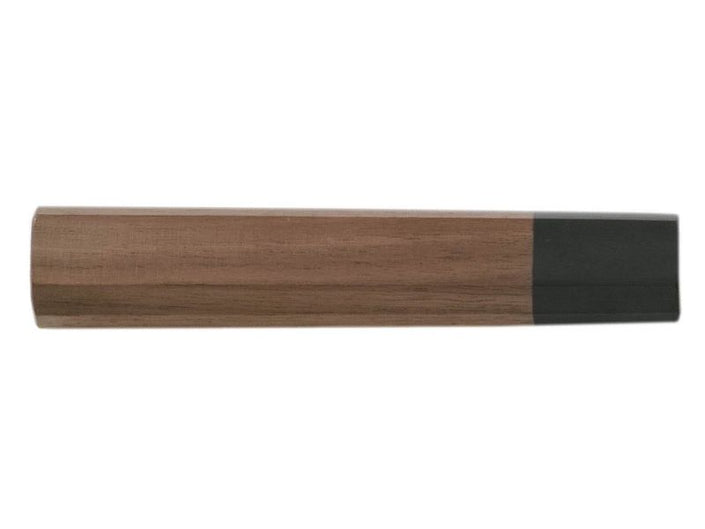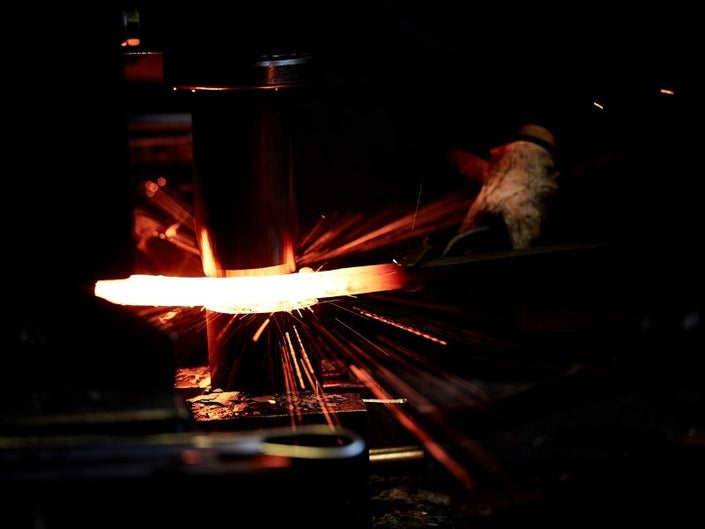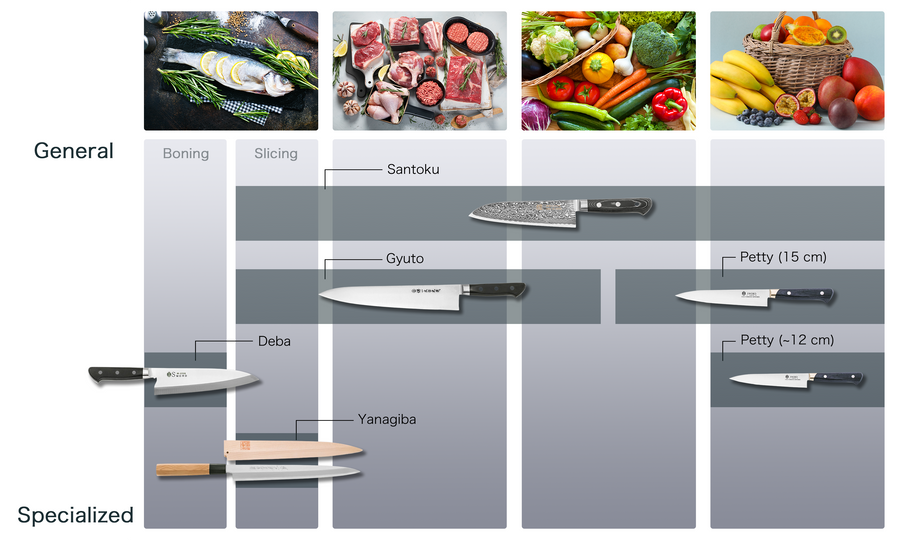SUI Kiwami Series
Our Sui Series mixes many of the well-known features of Sakai-made kitchen knives, complementing the professional artisanship of the blade with a black-dyed flat to create a “sophisticated” (粋 or sui in Japanese) appearance.
This knife incorporates the technology of traditional single-edged kitchen knives used by Japanese chefs, converting it into a knife suitable for use in the home. The delicate sharpness of our Sui knives is achieved not only by carefully forging and quenching White Steel #2 high-carbon steel, but by adding a Haze (Kasumi) finish at the ridge on the side of the blade. This is then dyed in black to create a classy, sophisticated finish. This knife not only performs well, but is an excellent presentation piece suitable for gifts.
| Product number | Actual Blade Length (mm) | Full Length (mm) | Total Weight (g) |
|---|---|---|---|
| 1suib | 170 | 300 | 155 |
| Blade | Material Name | Handle |
|---|---|---|

Double Edged |
Blue Steel #2 | Walnut Handle |

Wa-Santoku
A Wa-Santoku is typically used in households around Japan. Unlike the standard Santoku, the Wa-Santoku has a traditional Japanese handle which shifts the balance point slightly,allowing more nimble cutting.

Blue Steel #2
Adding tungsten, chromium, and alloy carbides to White Steel makes for a tough, chip-resistant blade.
Carbon Steel
Blue Steel #2 is made by adding trace amounts of tungsten and alloy carbides (both for hardness), and chromium (for toughness and rust resistance) to White Steel, creating an alloy steel that is very tightly bonded. This also leads to better edge retention compared to White Steel #2, so you can cut better for longer. Professional chefs looking to enter the next level of quality will often choose a Blue Steel #2 knife, but beginners can use this also.
*NOTE: Carbon Steel is susceptible to rust if it is not properly cared for. Please clean and dry the blade regularly during use and after use.

Walnut Handle
Walnut is a durable wood, commonly used in high-end furniture. It's easy to process and fits the hand naturally.

Forge Welded
Forge Welded knives undergo a forging process where steel is heated to high temperatures and then shaped with a hammer. This carefully done process changes the internal structure of the steel, producing a blade with superior hardness levels. Highly skilled craftspeople forge, quench, and create the knife's cutting edge by hand, resulting in a sharp blade with long edge retention.

Optional Engraving
Optional Engraving Service
Sakai Ichimonji provides complimentary engraving using either Japanese Kanji or English Alphabet. Please specify your preference. For details, please visit here
A knife store that has supported the history of knives and food culture in Japan.
It has been 600 years since the birth of swordmaking in the Sakai region of Japan. Sakai Ichimonji Mitsuhide's and it's craftsmen continue to build on that legacy by producing the finest blades in Japan.
This is where the culture of completing a dish of sashimi by "just cutting" and the culture of expressing sharpness as "taste" was born.
For 70 years, we have been connecting the spirit of Sakai's craftsmen with the passion of chefs in Osaka's kitchen equipment shopping district, known as the kitchen of Japan.
We are very happy that our knives can be used by people all over the world.
Precautions
After use, wash off any dirt and wipe thoroughly with a dry cloth to remove any moisture. This product is not for use with frozen foods.This product is handmade, so each piece will be different. Please use the weight and length listed as a guide. Each material is natural and may vary in color. It is not the same as the picture.We take great care with our inventory, but in the unlikely event that we are out of stock, we will contact you by email to let you know.








































